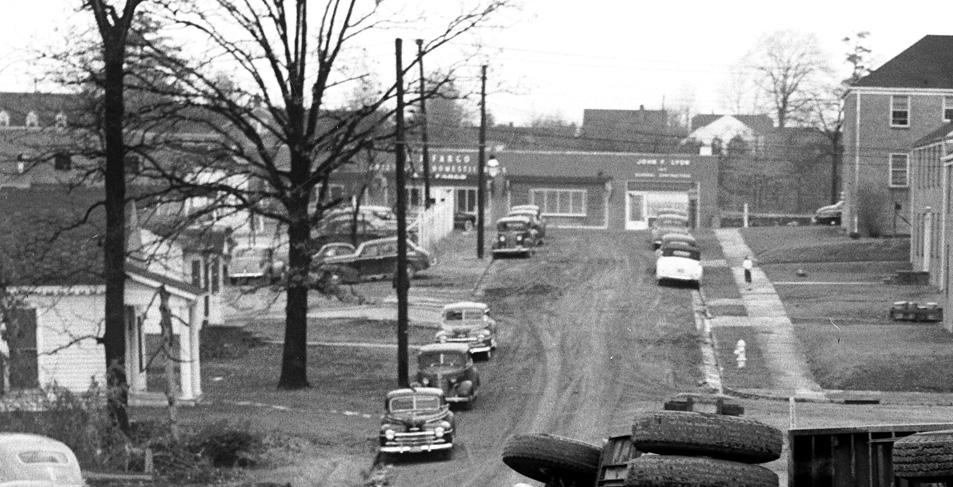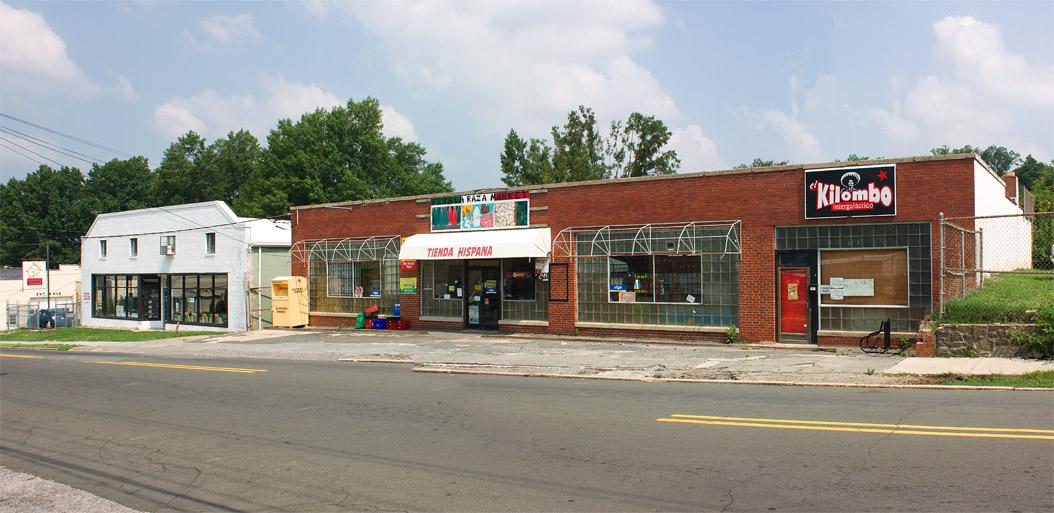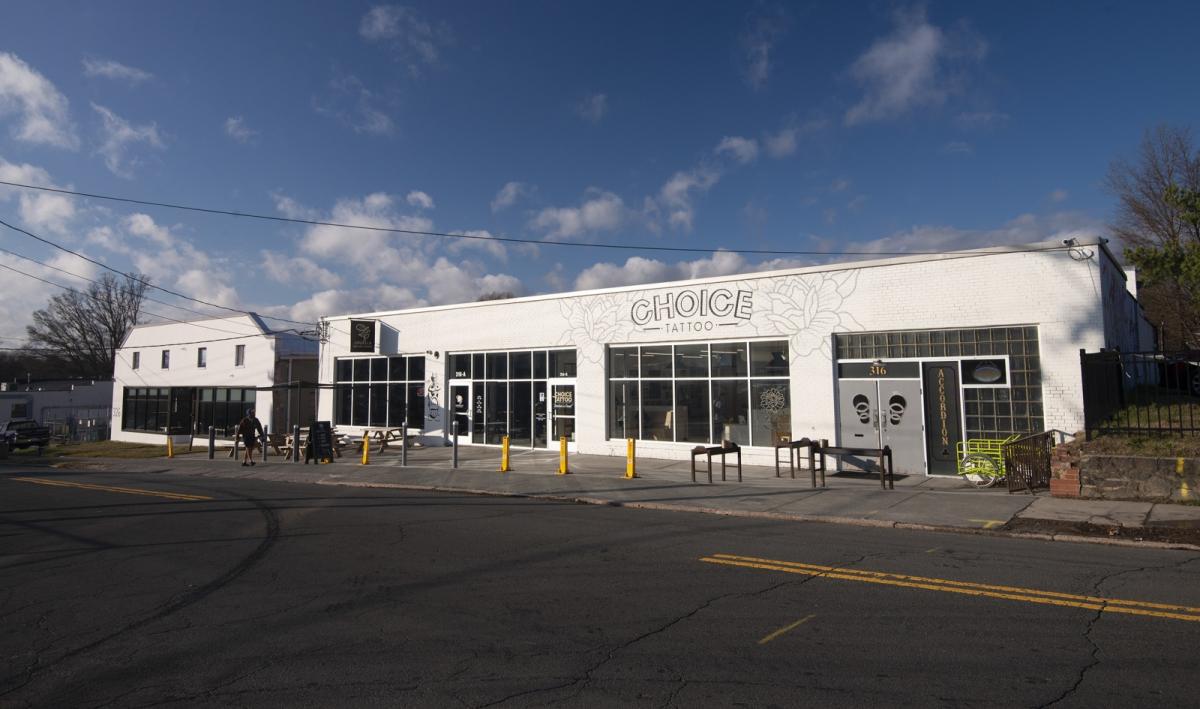Support OpenDurham.org
Preserve Durham's History with a Donation to Open Durham Today!
OpenDurham.org is dedicated to preserving and sharing the rich history of our community. Run by our parent nonprofit, Preservation Durham, the site requires routine maintenance and upgrades. We do not ask for support often (and you can check the box to "hide this message" in the future), but today, we're asking you to chip in with a donation toward annual maintenance of the site. Your support allows us to maintain this valuable resource, expand our archives, and keep the history of Durham accessible to everyone.
Every contribution, big or small, makes a difference and makes you a member of Preservation Durham. Help us keep Durham's history alive for future generations.




Comments
Submitted by Anonymous (not verified) on Mon, 8/4/2008 - 9:29pm
Somebody hurry and tear down everything that remains standing in these picture before someone declares them "historic" and modern commerce is blocked by these hidious examples of Durham's past. They are just examples. There have to be many many more unremarkalbe structures remaining in Durham from that period. The pictures are a great history lesson and clearly should be archived but certainly nothing in them should block reasonable development efforts that would result in their being raised and in these properties being elevated to serve their highest and best use. Our city's future should not be trapped by its past.
Submitted by Gary (not verified) on Mon, 8/4/2008 - 10:01pm
Anon
Isn't modern commerce ongoing in these structures? The lesson in the pictures is that there are not "many many more unremarkable structures remaining in Durham from that period." You can rest easy in the assurance that we will lose some of them - development is rarely hindered by preservation.
These particular structures aside, what you should be aware of is the economic success of cities that have embraced preservation of their historic structures. People want to live and work in, and visit, cities that have good architecture, a diversity of landscape, and character.
The difficulty lies in the fact that the "highest and best use" is a naive construct - one that pretends that the most lucrative short-term use of a parcel of land is necessarily the 'best'. Easy to do if you ignore the effect of such land uses on the adjacent land uses, or on the city as a whole. Also easy to do if you neglect the long-term view of the land, one that has to take into account what is done with that structure/parking lot, whatever, when the real estate fad-of-the-minute dries up.
I don't think Durham's future has ever been trapped by its past - unless you mean the wholesale demolition of downtown-and-surround that left the core of the city a bleak, empty ghost town. All those cleared parcels were mostly converted to empty parking lots, car dealerships, and government-funded projects to fill the void. If downtown Durham hadn't been such a gap-toothed moonscape, there might have been a few more buildings like this - ones that small entrepreneurs can hope to get a start in and make a business work? Wasn't that the American Dream once upon a time - starting a business that actually produces something? I'll take these folks over the speculators buying up land in order to try to cash out someday when the credit markets improve.
GK
Submitted by Anonymous (not verified) on Mon, 8/4/2008 - 10:30pm
GK,
I was being a bit facetious with my comment but you got the point. We have the same understanding of what went wrong downtown. The question is how do we move forward. I am very aware of the value of historic preservation when connected with community economic development. The two concepts can move hand in hand to bring a community to a better place.
I am not sure what you thought is about highest and best use. It is not a perfect concept but what would you use instead. It is currently bounded by zoning laws and community concerns. At the end of the day, it is the property owner who makes a bet on what the highest and best use might be, within the constrants that exist. I don't see a more workable concept.
I do see some land speculators out there but I also see some very article
Submitted by Anonymous (not verified) on Mon, 8/4/2008 - 10:31pm
oops hit post too soon. Let me just finsh my thought and suggest that there are some very conscious developers working in our downtown area.
Submitted by Anonymous (not verified) on Tue, 8/5/2008 - 12:29pm
I'm just glad the structures here are being used. I lament the disuse of so many structures in the "Central Park District." It only serves to isolate the area and make it feel "unsafe" because of how desolate it is--especially at night.
sadly, i'm not even sure if the twin "bars" on Riggsbee? are still up and running, they're generally so clandestine, but you'll occasionally see sacks of trash out front.
this area could be an amazing bridge between the residential areas of OND and DP to downtown Durham...but as it stands, it's like some dark gulf that people rarely want to cross alone
TSQ75
Submitted by Miriam Webster (not verified) on Wed, 8/6/2008 - 2:55am
OT: Y can't anon spell?
Submitted by Michael Bacon (not verified) on Wed, 8/6/2008 - 5:32pm
That's funny -- one of the reasons that I pushed so hard with Durham Central Market to target this general area is because there are so many buildings like this that could be easily converted to the sorts of complimentary businesses that sprung up around Weaver St. Market in Carrboro. Someone going through one particular set of blocks with a bulldozer would probably sour me on that set of blocks pretty quickly.
One of the reasons I personally like this block is that there's already several complimentary businesses in the general area, from the green building shop to Stone Bros. to Claymakers. Those add quite a bit more value to our business plan than a glossy new building would.
(Note -- I'm speaking entirely for myself here, not on behalf of the other board members.)
Add new comment
Log in or register to post comments.